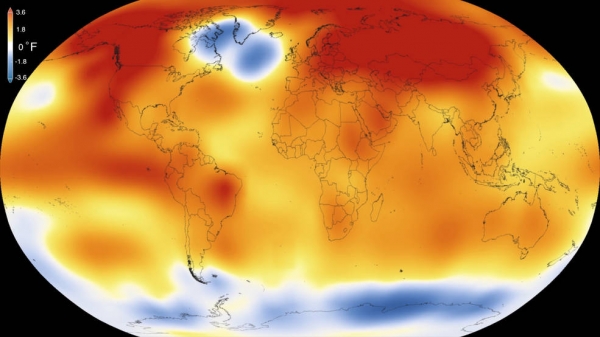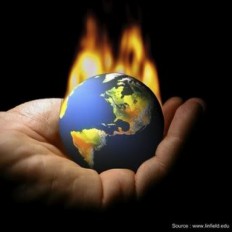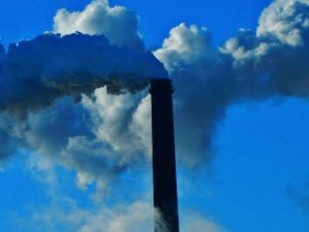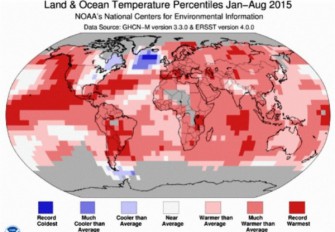
The record-breaking year continues a long-term warming trend — 15 of the 16 warmest years on record have now occurred since 2001.
The record-breaking year continues a long-term warming trend — 15 of the 16 warmest years on record have now occurred since 2001.
Global average temperature in 2015 was the hottest since record-keeping began in 1880, as revealed by separate analyses of NASA - the National Aeronautics and Space Administration and NOAA - the National Oceanic and Atmospheric Administration. An increase of +0.13C (+0.23F) in the global average temperature was observed, breaking the record which was only set in 2014. ‘It is not uncommon to have two years in a row of record-breaking temperatures. But if 2016 turns out to be as warm as scientists anticipate, that would be unprecedented as we have never had three years in a row’, says Gavin Schmidt, director of NASA's Goddard Institute for Space Studies.
These two analyses of the American agencies were based upon thousands of measurements from weather stations, ships and ocean buoys scattered around the world. Meteorological agencies in Britain and Japan also make worldwide measurements. They follow slightly different methods, but obtain similar results. British scientists released figures showing 2015 as the warmest on record since 1850. The Japan Meteorological Agency had already released preliminary results showing 2015 as the warmest year in a record beginning in 1891.
Source: NASA Goddard Institute for Space Studies
Weather phenomena such as the El Niño are one of the reasons 2015's temperature was so high, and the back-to-back increase records of 2014 and 2015 may mean that the world is back onto a trajectory of rapid global warming (since 1998 the trend had slowed down). It will take some years to know for sure, but climate change is definitely the challenge of our generation, affecting every living creature on Earth.
Watch the animation below, which is a demonstration of the long-term warming trend since 1880. In the animation, orange colors represent temperatures that are warmer than the 1951–1980 baseline average, while blues indicate temperatures that are cooler.
Media
- NASA
Want to read more like this story?

July 2016 was the hottest month in recorded history
Aug, 31, 2016 | NewsNASA’s and NOAA’s separate analyses come to the same conclusion NASA’s and NOAA...

2017 is expected to be hot, but probably not as hot as last year
Apr, 05, 2017 | NewsWeather forecasters are predicting that 2017 will still be one of the hottest years on record. We...

The Earth Is Still Too Hot!
Jun, 08, 2015 | NewsDespite the widespread impression that in recent years there has been some respite and slowdown in c...

Insufficient Measures of Australia for the Environment
Sep, 07, 2015 | NewsAccording to the committee for the climate of the United States of America (USA), the first six mont...

Denmark hit a world record producing 42% of its electricity from wind
Feb, 16, 2016 | News2015 was another record-breaking year for Danish wind power In fact, Danish wind turbines generat...

Climate change brings new challenges in road surfaces
Jul, 24, 2019 | NewsAccording to a new study, the thickness of asphalt layers should increase by 7% to 32% in order...

Record Rainfall in Texas and Oklahoma Continues to Wreak Havoc
May, 26, 2015 | NewsRecord setting rains that fell on Sunday in Texas and Oklahoma are still wreaking havoc as flooding...

A Mysterious Cold Spot in the Atlantic Confirms the "Nightmare"...
Oct, 14, 2015 | NewsThe temperatures that have prevailed on our planet during the summer have alarmed scientists. The...

UN’s report: Record amount of renewable energy capacity added in 2016
Nov, 08, 2017 | NewsLargely due to rapidly falling costs of clean energy, global renewable energy capacity jumped 8% las...
Trending

Vertical gardens in Mexico City to combat pollution

Saudi Park Closed After 360 Big Pendulum Ride Crashes to Ground, 23 injured

Characteristics of Load Bearing Masonry Construction

Taipei 101’s impressive tuned mass damper

Dutch greenhouses have revolutionized modern farming

Federal court rules Biden’s offshore drilling ban unlawful


